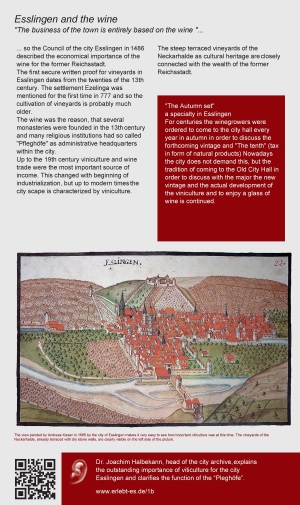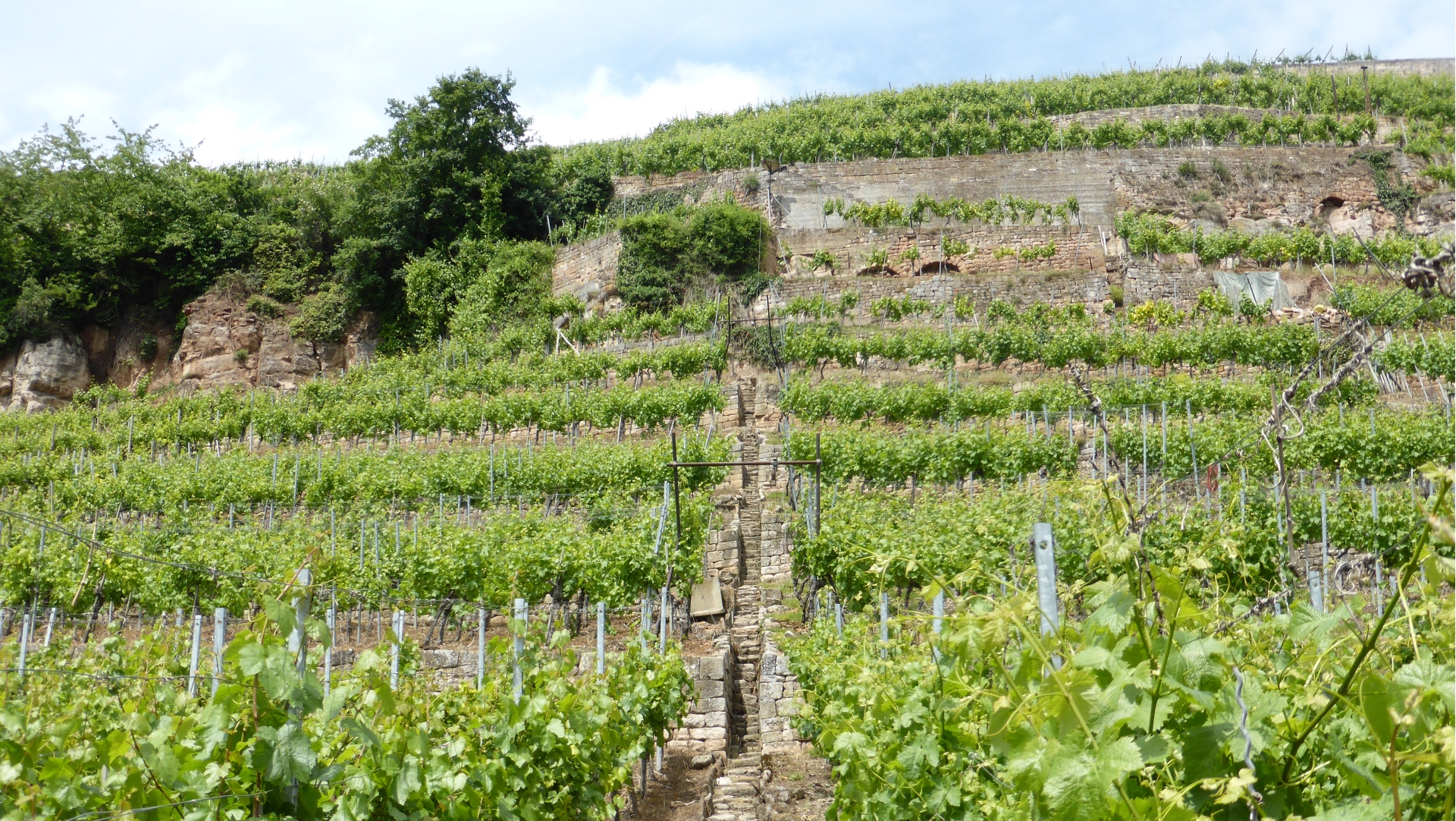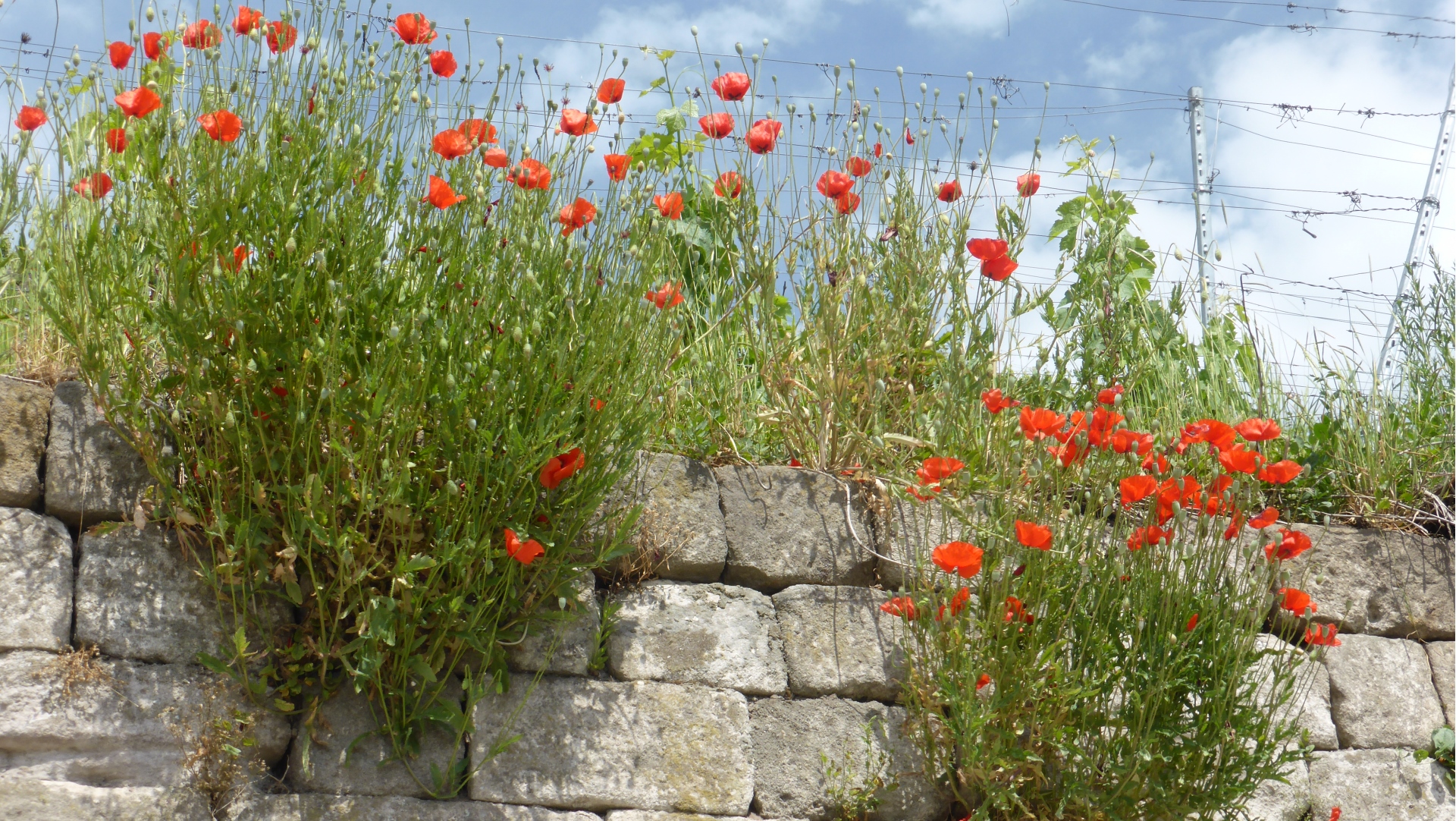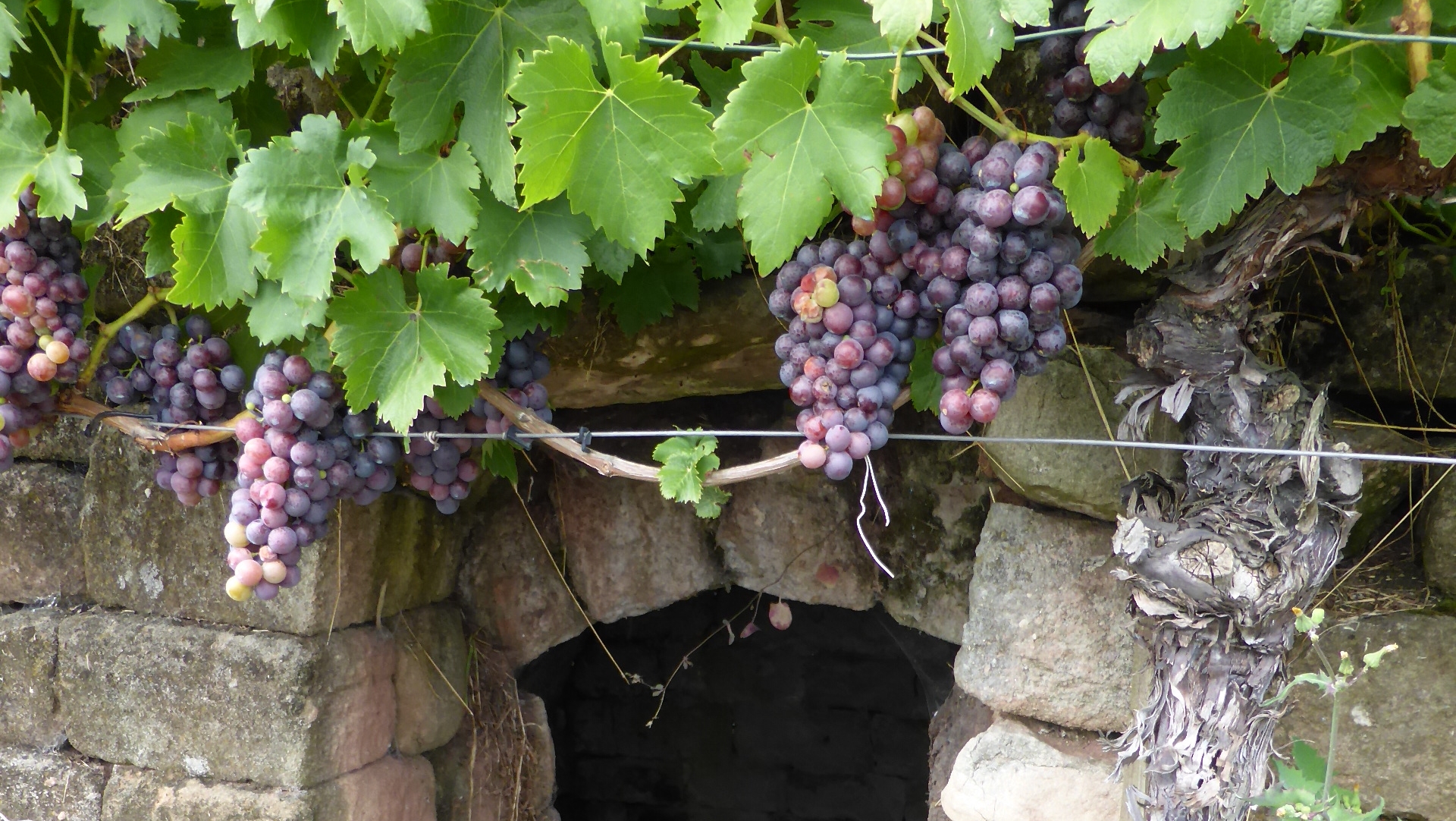Weinerlebnisweg 1b


„There is a wonderful source to quote from the year 1486. The council once said that the urban economy was based on wine. This makes clear the enormous importance for the city.“ Dr. Joachim Halbekann, head of the city archive, explains how viniculture impressed the city over the years of historic development. In the field of architecture you can notice the houses of the winegrowers but also the gorgeous buildings of the spiritual institutions, so-called „Pfleghöfe“. „Pfleghof“ is a local terminus which can be translated into economic access yard of spiritual institutions. Just imagine that monasteries from no wine areas had a great demand in wine. Do not think of monasterial feasts, but wine had a particular importance and many monasteries were be obligated to welcome officials with wine. These monasteries were dependent on importing wine from the outside. Many monasteries had branches in Esslingen, they built access yards as platform for winegrowing, to vinify wine and to import it.“ We had minimum 11 of such institutions, the buildings are still existing to a large extent. Near the church Frauenkirche you can find the Salemer Pfleghof for example. The Speyrer Pfleghof is the headquarter of the Kessler champagne manufacture. But viniculture did not only have influence on the architecture, but also on the people who lived from and with the wine. „There was a huge infrastructure around the wine, which made it a real wine city and there were a lot of people who were directly and indirectly connected with the production of wine. Viticulture is so important for Esslingen, nowadays not as economic as it was in the past, but it would be a white spot in the history of the city if viticulture would not be clear in our eyes. People who mention Esslingen, in my opinion have to think of viticulture and to see it. Luckily, viticulture is no white spot in Esslingen and you can have a look at this old wine culture.





